Internet of Things and Predictive Artificial Intelligence for SmartComposting Process in the Context of Circular Economy †
Abstract
1. Introduction
2. Materials and Methods
2.1. Automated Composting Unit
2.2. Real-Time Data Transmission and Remote Monitoring via MQTT and ThingSpeak
2.3. Composting Mixture
2.4. Organic Matter Degradation Analysis
2.5. AI Model Selection and Comparison
2.6. Predicting Compost Maturity Using Noisy Linear Interpolation and Recurrent Neural Networks
3. Results
3.1. Organic Matter Degradation
3.2. Organic Matter Data Interpolation
3.3. Predicted Results Analysis (Using LITE-RNN)
4. Conclusions
Author Contributions
Funding
Institutional Review Board Statement
Informed Consent Statement
Data Availability Statement
Acknowledgments
Conflicts of Interest
References
- Jo, R.S.; Lu, M.; Raman, V.; Then, P.H.H. Design and Implementation of IoT-enabled Compost Monitoring System. In Proceedings of the IEEE 9th Symposium on Computer Applications & Industrial Electronics (ISCAIE), Kota Kinabalu, Malaysia, 27–28 April 2019. [Google Scholar] [CrossRef]
- Fouguira, S.; Benhra, J.; El Haji, M.; Ammar, E. Optimization of olive oil extraction wastes co composting procedure based on bioprocessing parameters. Heliyon 2023, 181, 107040. [Google Scholar] [CrossRef] [PubMed]
- Fouguira, S.; Mhaned, A.; Ben Abbou, M.; Ammar, E.; El Haji, M.; Benhra, J. Effectiveness of compost use in salt-affected soil in an automated greenhouse irrigation system. E3S Web. Conf. 2023, 364, 03002. [Google Scholar] [CrossRef]
- Bera, R.; Datta, A.; Bose, S.; Dolui, A.K.; Chatterjee, A.K.; Dey, G.C.; Barik, A.K.; Sarkar, R.K.; Majumdar, D.; Seal, A. Comparative evaluation of compost quality, process convenience and cost under different composting methods to assess their large scale adoptability potential as also complemented by compost quality index. Int. J. Sci. Res. Publ. 2013, 3, 1–11. [Google Scholar]
- Haidar, D.; Mouatassim, S.; Benabbou, R.; Benhra, J. Towards a Data-Driven predictive framework. In Practice, Progress, and Proficiency in Sustainability; IGI Global Scientific Publishing: Hershey, PA, USA, 2025; pp. 219–296. [Google Scholar] [CrossRef]
- Han, Y.; Du, Z.; Hu, X.; Li, Y.; Cai, D.; Fan, J.; Geng, Z. Production prediction modeling of food waste anaerobic digestion for resources saving based on SMOTE-LSTM. Appl. Energy 2023, 352, 122024. [Google Scholar] [CrossRef]
- Nikoloudakis, Y.; Panagiotakis, S.; Manios, T.; Markakis, E.; Pallis, E. Pallis. Composting as a Service: A Real-World IoT Implementation. Future Internet 2018, 10, 107. [Google Scholar] [CrossRef]
- Mhaned, A.; Salma, M.; Mounia, E.H.; Jamal, B. Contribution to smart irrigation based on internet of things and artificial intelligence. In Lecture Notes in Networks and Systems; Springer International Publishing: Cham, Switzerland, 2023; pp. 537–549. [Google Scholar] [CrossRef]
- Mhaned, A.; Mouatassim, S.; Haji, M.E.; Benhra, J. Low-Cost smart irrigation system based on internet of things and fuzzy logic. In Communications in Computer and Information Science; Springer International Publishing: Cham, Switzerland, 2022; pp. 78–89. [Google Scholar] [CrossRef]
- Wojcieszak, D.; Zaborowicz, M.; Przybyl, J.; Boniecki, P.; Jedrus, A. Assessment of the Content of Dry Matter and Dry Organic Matter in Compost with Neural Modelling Methods. Agriculture 2021, 11, 307. [Google Scholar] [CrossRef]
- AFNOR. NF U44-051: Amendements Organiques—Définition, Spécifications et Marquage; Association Française de Normalisation: Paris, France, 2006. [Google Scholar]
- Lepot, M.; Aubin, J.; Clemens, F. Interpolation in Time Series: An introductive overview of existing methods, their performance criteria and uncertainty assessment. Water 2017, 9, 796. [Google Scholar] [CrossRef]
- Alrowais, R.; Said, N.; Al-Otaibi, A.; Hatata, Y.A.; Essa, M.A.; Abdel Daiem, M.M. Comparing the effect of mesophilic and thermophilic anaerobic co-digestion for sustainable biogas production: An experimental and recurrent neural network model study. J. Clean. Prod. 2023, 392, 136248. [Google Scholar] [CrossRef]
- Meng, X.; Liu, B.; Zhang, H.; Wu, J.; Yuan, X.; Cui, Z. Co-composting of the biogas residues and spent mushroom substrate: Physicochemical properties and maturity assessment. Bioresour. Technol. 2019, 276, 281–287. [Google Scholar] [CrossRef] [PubMed]
- Luo, Y.; Liang, J.; Zeng, G.; Chen, M.; Mo, D.; Li, G.; Zhang, D. Seed germination test for toxicity evaluation of compost: Its roles, problems and prospects. Waste Manag. 2018, 71, 109–114. [Google Scholar] [CrossRef]
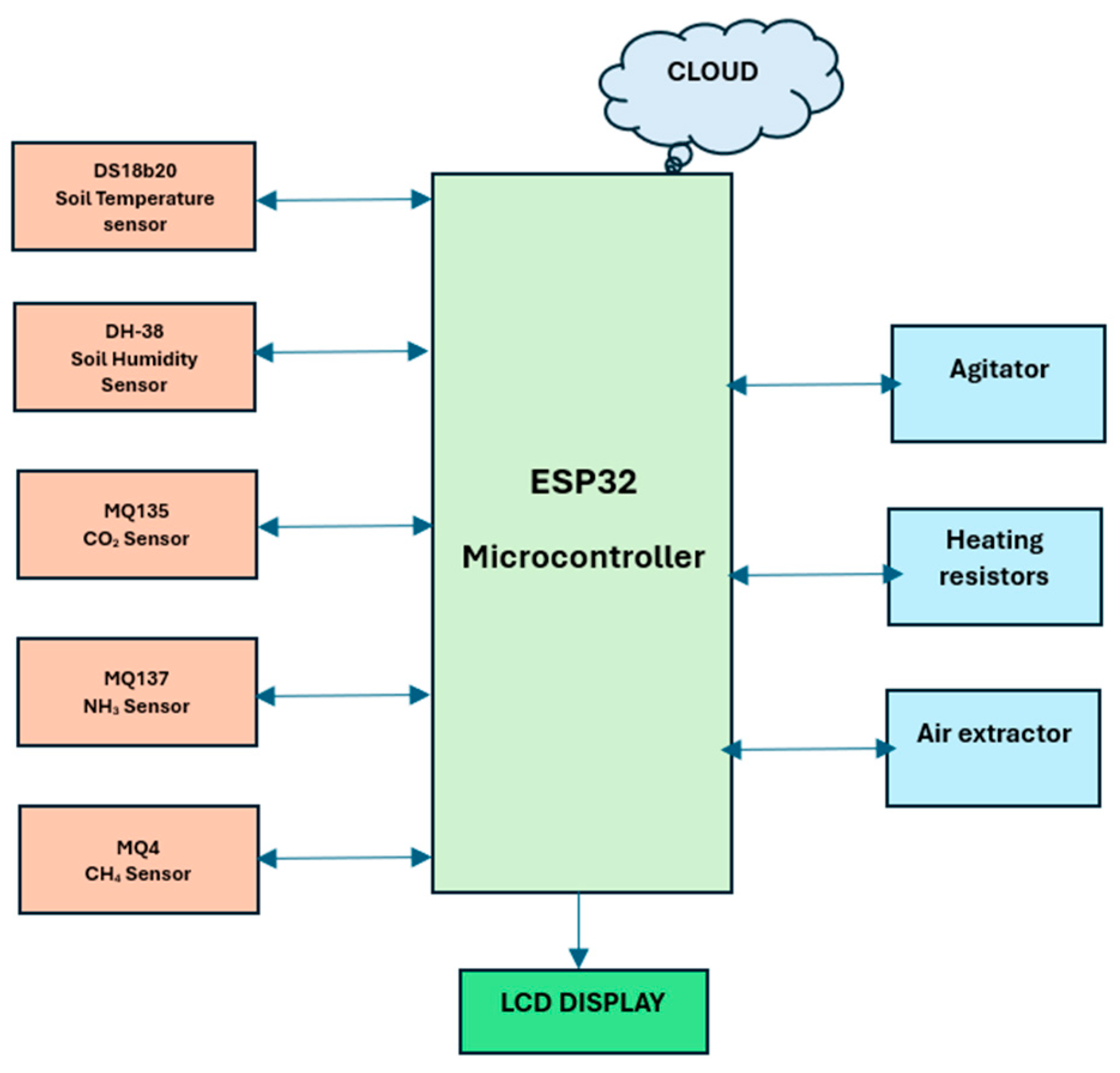
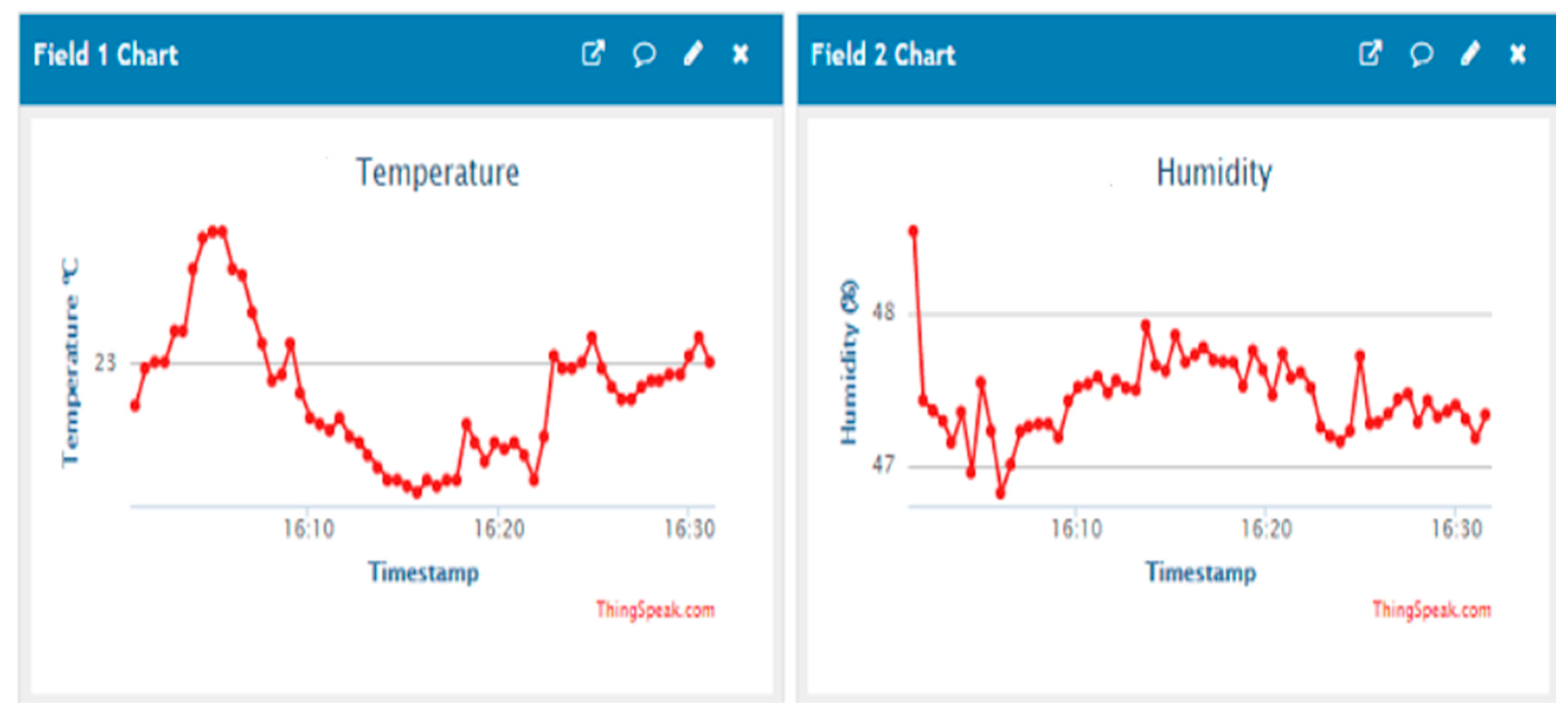
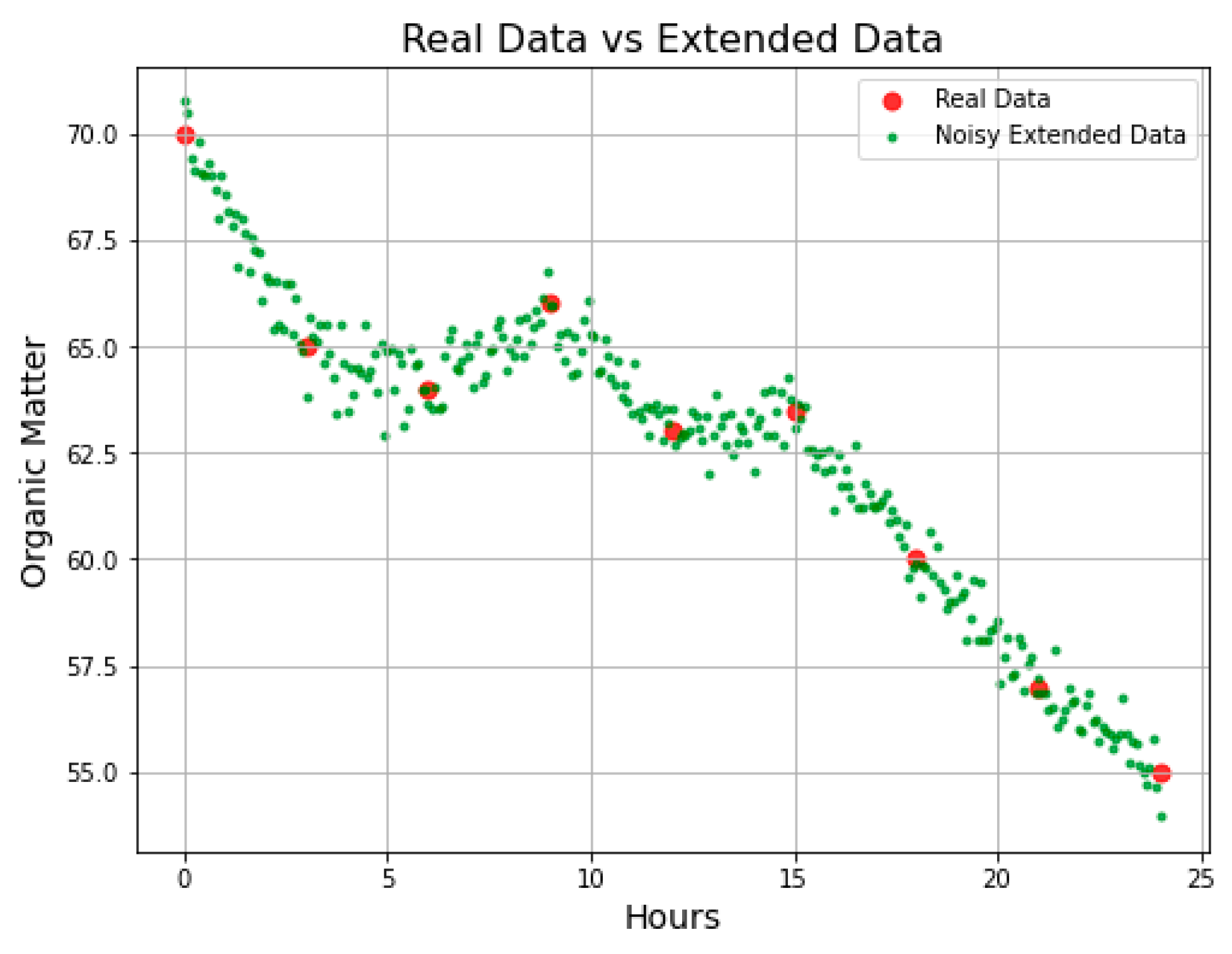
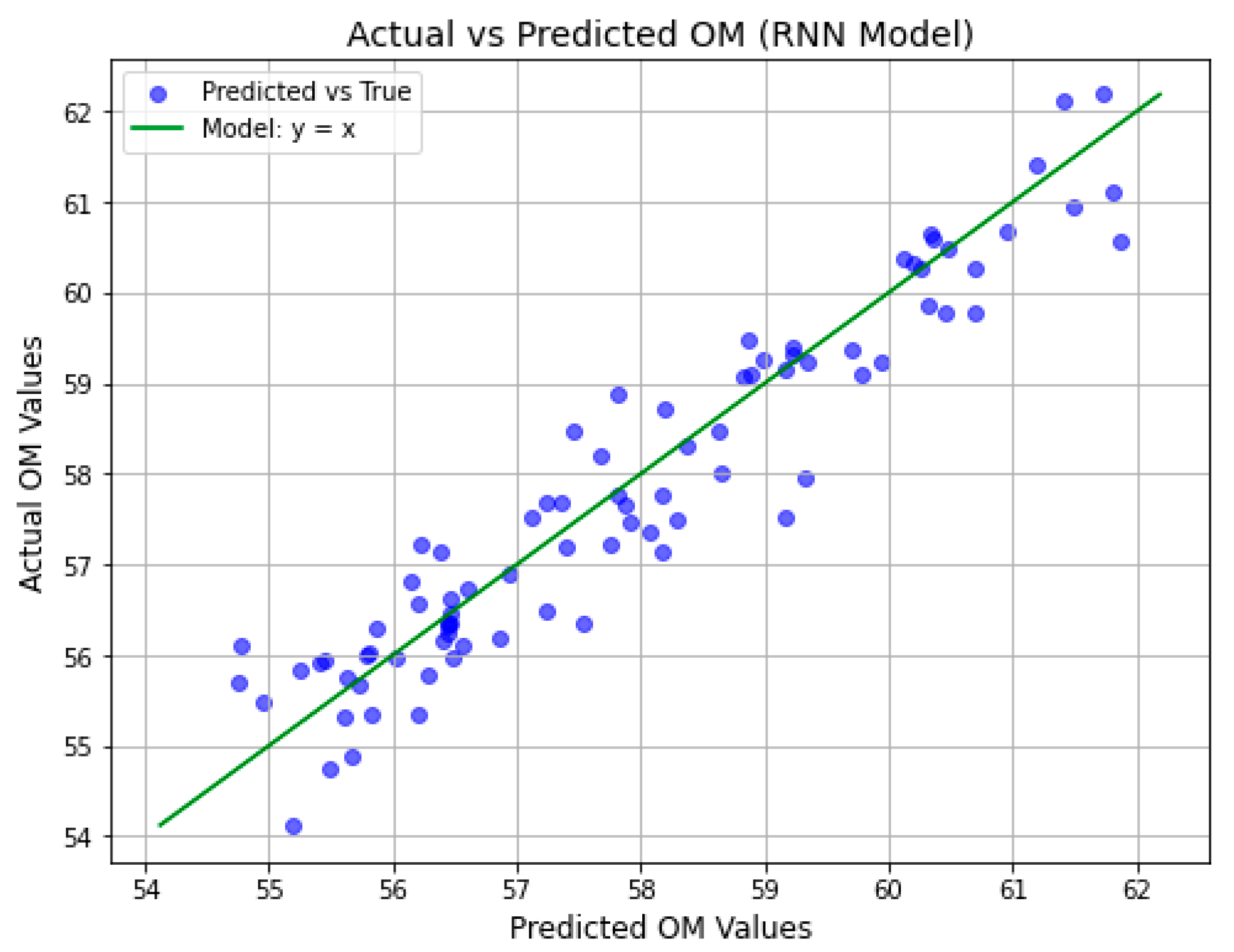
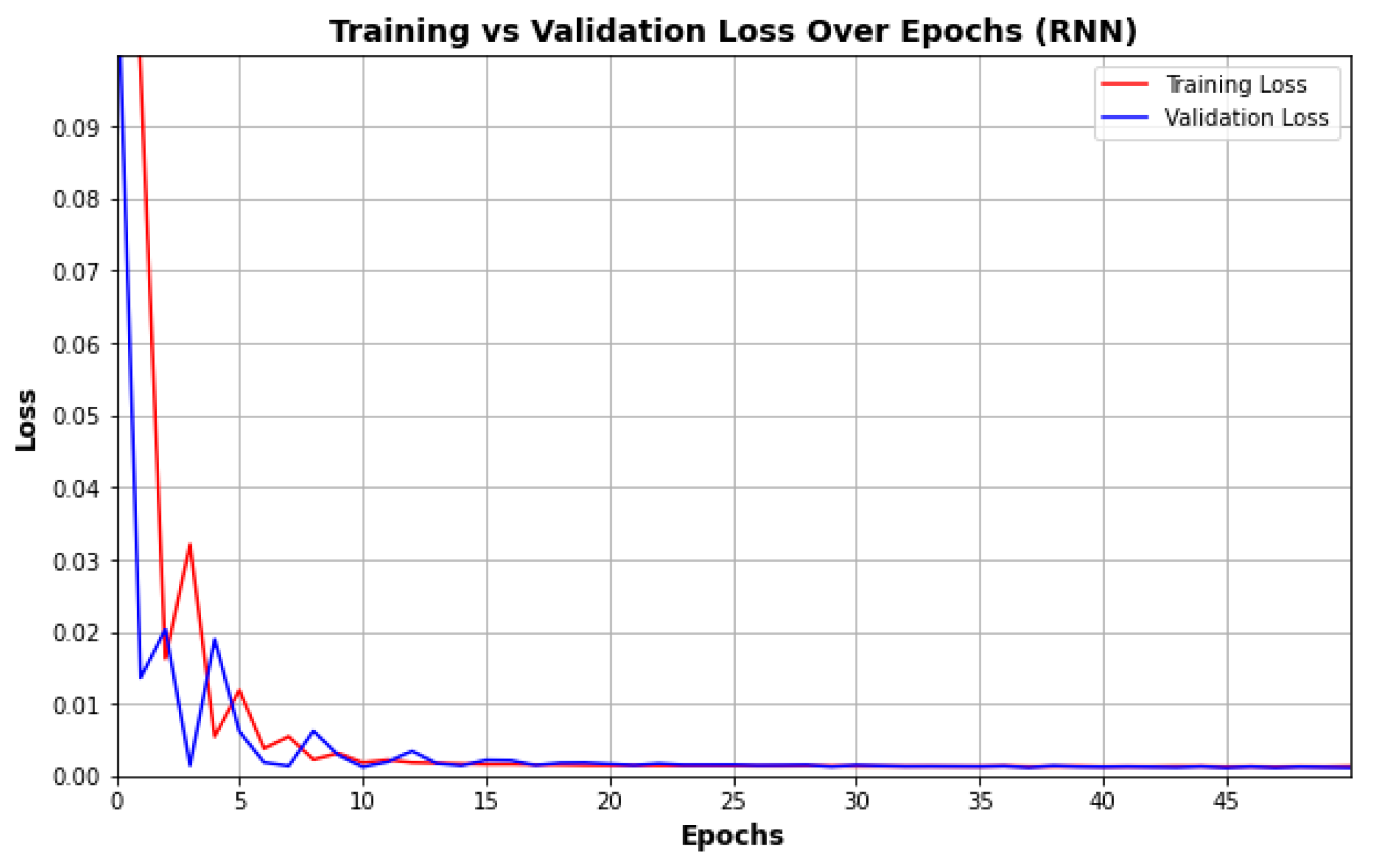
| Hour | Organic Matter (OM) |
|---|---|
| 0 | 70.0 ± 0.2 |
| 3 | 65.0 ± 0.2 |
| 6 | 64.0 ± 0.2 |
| 9 | 66.0 ± 0.2 |
| 12 | 63.0 ± 0.2 |
| 15 | 63.5 ± 0.2 |
| 18 | 60.0 ± 0.2 |
| 21 | 57.0 ± 0.2 |
| 24 | 55.0 ± 0.2 |
Disclaimer/Publisher’s Note: The statements, opinions and data contained in all publications are solely those of the individual author(s) and contributor(s) and not of MDPI and/or the editor(s). MDPI and/or the editor(s) disclaim responsibility for any injury to people or property resulting from any ideas, methods, instructions or products referred to in the content. |
© 2025 by the authors. Licensee MDPI, Basel, Switzerland. This article is an open access article distributed under the terms and conditions of the Creative Commons Attribution (CC BY) license (https://creativecommons.org/licenses/by/4.0/).
Share and Cite
Fouguira, S.; Ammar, E.; Haji, M.E.; Benhra, J. Internet of Things and Predictive Artificial Intelligence for SmartComposting Process in the Context of Circular Economy. Eng. Proc. 2025, 97, 16. https://doi.org/10.3390/engproc2025097016
Fouguira S, Ammar E, Haji ME, Benhra J. Internet of Things and Predictive Artificial Intelligence for SmartComposting Process in the Context of Circular Economy. Engineering Proceedings. 2025; 97(1):16. https://doi.org/10.3390/engproc2025097016
Chicago/Turabian StyleFouguira, Soukaina, Emna Ammar, Mounia Em Haji, and Jamal Benhra. 2025. "Internet of Things and Predictive Artificial Intelligence for SmartComposting Process in the Context of Circular Economy" Engineering Proceedings 97, no. 1: 16. https://doi.org/10.3390/engproc2025097016
APA StyleFouguira, S., Ammar, E., Haji, M. E., & Benhra, J. (2025). Internet of Things and Predictive Artificial Intelligence for SmartComposting Process in the Context of Circular Economy. Engineering Proceedings, 97(1), 16. https://doi.org/10.3390/engproc2025097016





